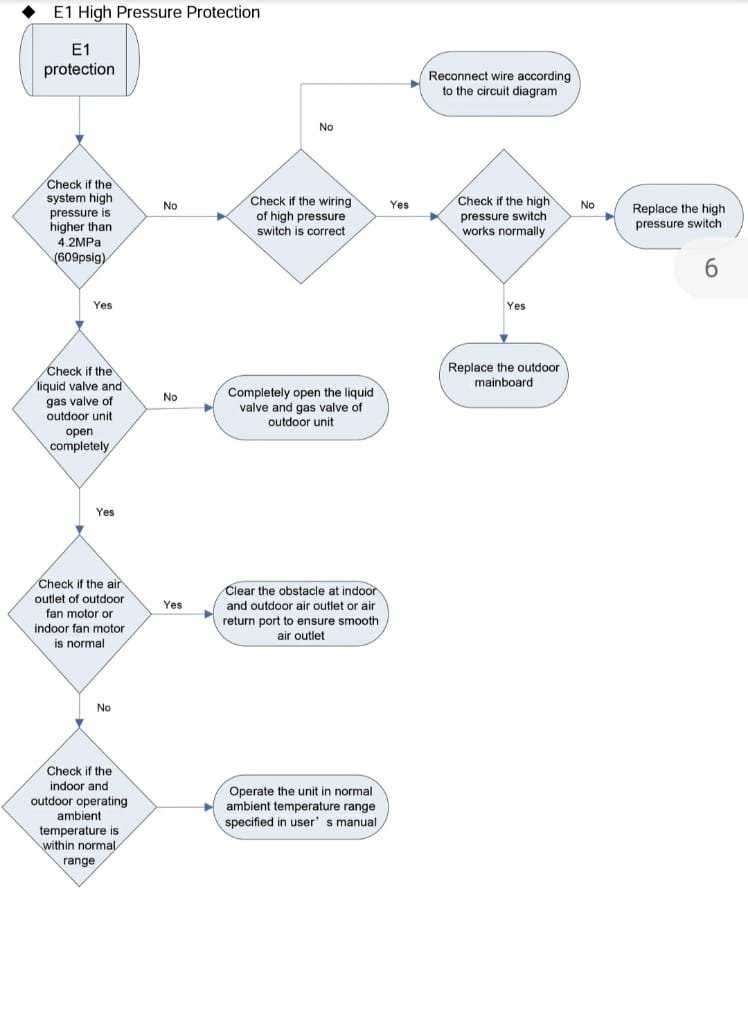
Error codes on air conditioners are like secret messages that tell you something’s not right. Think of them as the machine’s way of waving a little flag that says, “Hey, I need some attention over here!” The E1 error code can be particularly frustrating because, at first glance, it seems cryptic and unhelpful. But fear not; we’re here to break it down. Typically, this error is related to issues with the temperature sensor. Just like your car’s dashboard warning lights, these codes are to help you diagnose potential problems so you can get back to relaxing in cool comfort.
Now, let’s explore what causes this error and what you can do about it. Understanding these causes will empower you to take action and, ideally, get your air conditioner back up and running smoothly.
Understanding Error Code E1
Before we get into the nitty-gritty, it’s crucial to understand what error code E1 actually stands for in a GE air conditioner. This code usually indicates a communication error between the unit’s indoor and outdoor components or a problem with the temperature sensor. Think about it like a baseball team where the pitcher and catcher aren’t on the same page—that miscommunication can lead to a serious foul-up in the game.
Picture your air conditioner as a team of components all working together to keep your home cool. The indoor and outdoor units constantly share information to ensure everything is running smoothly. When an E1 error occurs, it’s like there’s a bad cell signal between them, causing a breakdown in communication. This miscommunication can lead to your unit shutting down or not functioning properly.
The temperature sensor plays a vital role here as well. It’s like a thermostat for your air conditioner’s internal system, helping regulate the cooling process. If this sensor fails to send the correct signals, the air conditioner might not be able to maintain the desired temperature, resulting in the E1 warning. The first step in resolving this issue is understanding where the breakdown might be happening.
Causes of the Error Code E1
There are several potential culprits behind the E1 error code. First on the list is a faulty temperature sensor. Imagine trying to bake a cake without knowing what temperature your oven is set to—it’s bound to lead to a culinary disaster. Similarly, a defective sensor can cause your air conditioner to misread the room’s temperature, leading to operational issues.
Another common issue is wiring problems. Just as a tangled set of holiday lights can prevent them from brightening up your home, damaged or loose wires in your air conditioner can disrupt communication between critical components. If wires are frayed or not securely connected, it might result in the E1 error code popping up on your display.
Lastly, it could be a software glitch. Electronics sometimes have their quirks, and a simple reset can sometimes do wonders—kind of like turning your computer off and on again to fix an internet connection problem. Here, your air conditioner’s circuitry might just need a little refresh to get back to its usual self.
For each of these causes, there are various troubleshooting steps you can take—either by yourself or with the help of a professional technician—to restore your air conditioner to peak performance.
Steps to Resolve Error Code E1
Having identified the likely causes of the E1 error, it’s time to talk solutions. A good first step is to reset your air conditioner. Unplug it for a few minutes, then reconnect. This process is like giving your phone a reboot when apps start acting up. It allows the system to refresh and, oftentimes, fixes minor glitches.
Should the reset not do the trick, check the temperature sensor. Refer to your unit’s manual for guidance on locating and inspecting this crucial component. If it appears damaged or disconnected, it might need replacing. Sensory issues can be tricky, so don’t hesitate to reach out to a professional if you’re unsure.
If the error persists, it’s worth examining the wiring. Carefully look for any signs of wear or loose connections. Just like fixing a bad connection on a headphone jack, sometimes all it takes is a gentle nudge or tightening to set things right. However, if you’re not comfortable fiddling with wires, consider calling in a technician.
Finally, if none of these steps resolve the issue, contacting GE customer support or a professional HVAC technician can be your best bet. They have the know-how to dive deeper into potential software or hardware issues and provide a comprehensive fix.
Preventing Future Errors
Once your air conditioner is back in good working order, you’ll want to keep it that way. Regular maintenance can prevent many issues before they start. Think of it like giving your car regular oil changes—this proactive care can save you a world of trouble down the road.
Begin by cleaning or replacing filters every few months. This not only ensures good air quality but also helps the unit run more efficiently, thus reducing the strain on components like the temperature sensor and wiring.
Additionally, schedule annual check-ups with a certified technician. They can spot potential problems and offer solutions before they evolve into something more serious. It’s like visiting a doctor for a yearly physical—catches small issues before they become big ones.
And there you have it! With this guide, you’re now equipped to understand and tackle the E1 error code should it ever appear on your GE air conditioner. Rest easy knowing that when things go awry, you’ve got the knowledge to set them right.